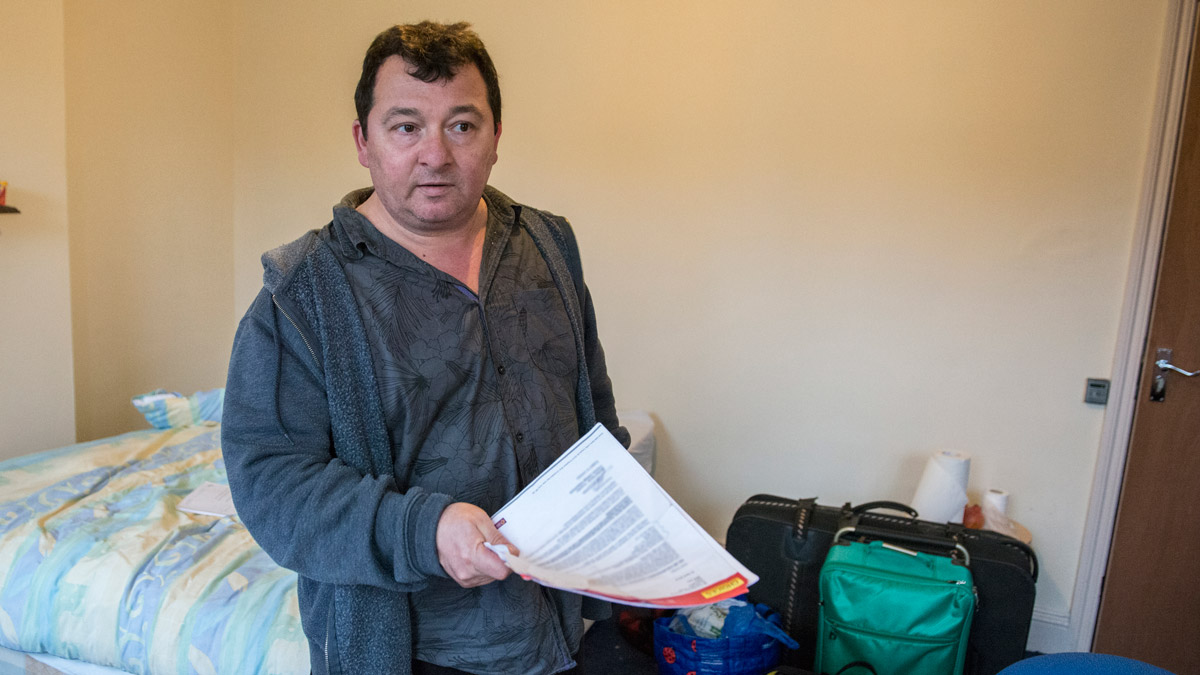Last week was an important week for housing policy.
An important week for the thousands of men and women bedding down on our streets tonight; nearly 80,000 households going home to temporary accommodation; 1.2 million families waiting for their names to come to the top of the social housing waiting list and half a million social housing tenants without a decent home.
Rough sleeper strategy
On Monday, the Secretary of State published the Rough Sleeping Strategy, setting out the Government’s plans to make good on its manifesto pledge to halve rough sleeping in this Parliament and to end it for good by 2027.
The strategy was based on the recommendations of the Rough Sleeping Advisory Panel on which Shelter sat alongside other housing and homelessness organisations.
The strategy takes the right approach, highlighting the importance of the various arms of government – work and pensions, health, and justice – working together to prevent and rapidly alleviate the problems that lead to rough sleeping. Too often, we encounter people who have been discharged from hospital without a suitable home or are released from prison with no fixed abode.
It also makes some important new commitments. With the loss of a private tenancy the leading cause of homelessness, the new £19m tenancy sustainment fund should help some people avoid eviction and street homelessness. But, though welcome, it will only go some way to plug the huge gap left by cuts to the Supporting People programme.
The announcement that people in homelessness hostels, women’s refuges and other forms of supported housing will continue to receive housing benefit will give much-needed certainty to providers and should hopefully lead to extra bedspaces for those at risk of the street.
And the further £50m in Move-On funding for outside London should help to deliver longer-term homes for people who are ready to move into a settled home.
But, disappointingly, the strategy has little to say on the impact of the housing benefit restrictions that make it so difficult to find or keep a decent rental, or the chronic shortage of investment in social housing for people at risk of the street. We must hope that the promised feasibility study (co-funded by DWP) to assess the impacts of government policy on homelessness will lead to a recognition that rough sleeping can only end when people can find affordable homes.
Social housing green paper
On Tuesday, came the long-awaited Social Housing Green Paper, which – after the Grenfell fire – had had promised a fundamental rethink of social housing.
The really good news is the announcement that 2016 legislation allowing government to levy councils for vacated high value council homes will be repealed ‘when Parliamentary time allows’. And legislation requiring council landlords to let on fixed-term tenancies will not be implemented ‘at this time’. Shelter oppose both measures and had argued strongly that they would deny people the settled homes they need.
Also welcome is the suggestion of ‘regulatory change’ so that consumer standards in social housing are enforced in a similar way to the economic standards, with abolition of the ‘serious detriment test’ if it prevents the Regulator from taking a proactive approach. Social housing must have a regulator with teeth if tenants are to have decent homes. And the service provided to tenants must be a big priority for inspection and enforcement.
There are also welcome suggestions to set timescales for landlords, and the Ombudsman, to more quickly deal with complaints so that tenants receive a speedy resolution to their concerns. This should help in individual cases.
But this is underpinned by the idea that tenants can exercise consumer choice: if they see their landlord is providing a poor service under proposed new performance indicators and league tables, then they can vote with their feet. There is the suggestion of introducing the ‘would you recommend to family and friends’ test already used by the NHS.
What’s the fix?
But, as survivors of the Grenfell fire have pointed out, social renters can’t simply up sticks and move to another landlord in the same way that a patient can move to a new GP. Once in social housing, the shortage of homes, combined with massive demand, means that it’s extremely difficult to move. We’re advising many families in the shadow of Grenfell Tower who are severely overcrowded and with dreadful disrepair. But there are few suitable homes for them to move to.
So, the big disappointment is the green paper doesn’t commit a single extra penny to social housing. Without more funding to build far more homes for the thousands trapped in temporary accommodation and expensive private rentals, and to ensure that existing social homes are safe and healthy to live in, too many people risk being trapped in bad housing.
Our Social Housing Commission has been listening to people all over the country and will soon be setting out its blueprint for change. We urge the government to listen.

